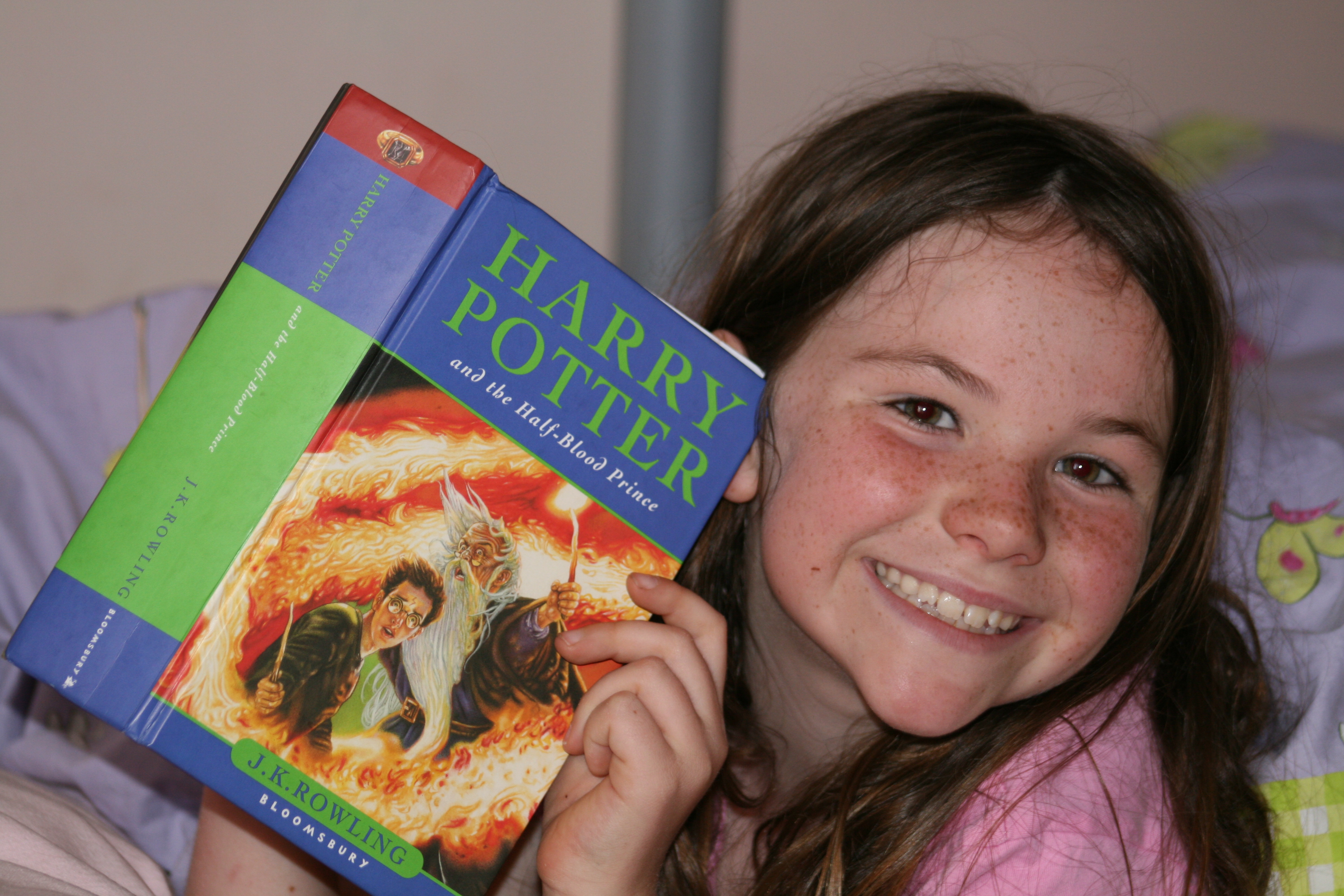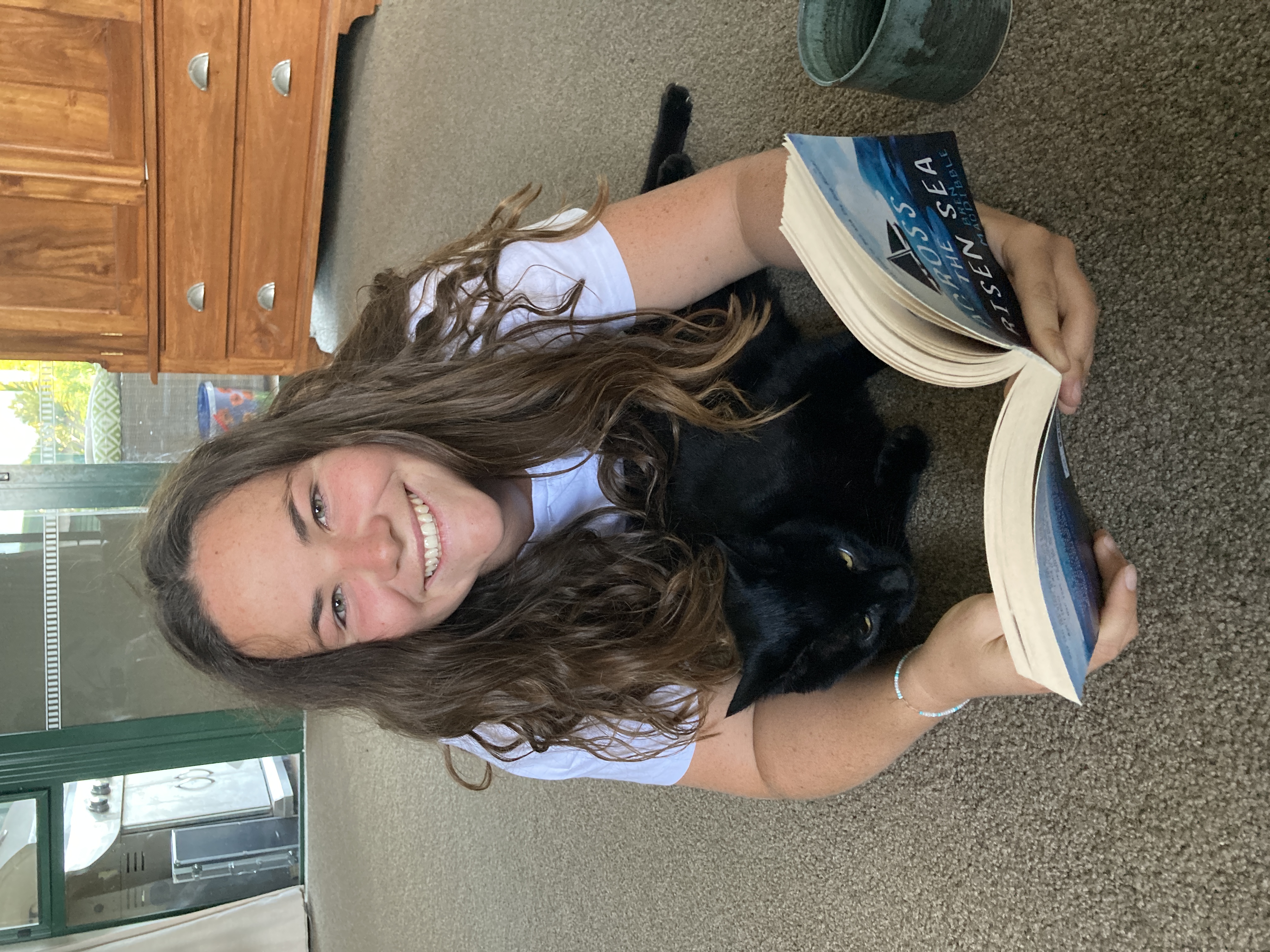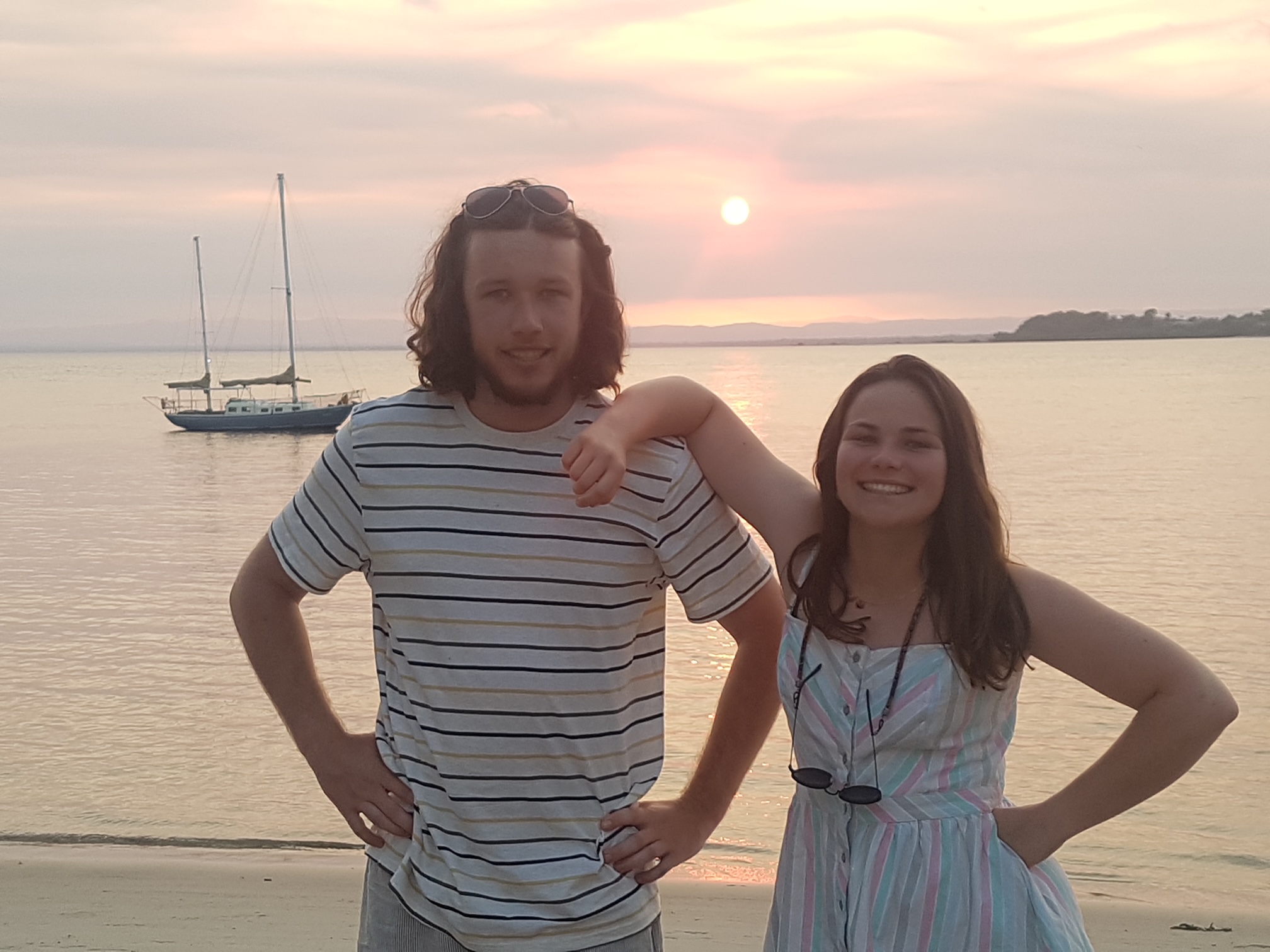“The current generation of children have many digital distractions, and it can be hard to promote reading as a stimulating and exciting activity. I was fortunate in that my children grew up in the country, and before social media, but it did impact their enthusiasm for reading in their teenage years.”
Maria Gill talks about her now grown-up kids’ reading habits through the years.

Our son Tristan was an active boy with a short attention span. The only time we could get him to read was at bedtime, but he preferred we read to him. It was the heady days of the Harry Potter series just coming out. Our son was much younger than the intended audience, but he had learned from his older cousins that it was the coolest book to read. My husband, Rod and I also became obsessed with the series and enjoyed reading them aloud to our son.
My passion for books must have rubbed off on our daughter Rhiannon, as she always had a book in her hand, even if we were away from home. She preferred we read her fairies and animal picture books. When she graduated to reading chapter books, she read all of Australian author Emily Rodda’s Deltora Quest 15 books eight times. Then she discovered Harry Potter and reread them many times, reciting the first book’s chapter off -by -heart. Her brother couldn’t understand why she spent so much time reading. He teased Rhiannon often and called her a book nerd. She wore it as a badge of honour.
He teased Rhiannon often and calledher a book nerd. She wore it as a badge of honour.
To encourage Tristan to read more, I needed to feed his questioning mind. We borrowed many nonfiction books from the library, including Andrew Crowe’s wildlife books. Being a deep thinker, Tristan read slowly, chewing over each sentence’s meaning. It meant he often lost the thread of a plot in fictional books. Whereas, when reading nonfiction books, he could dip in and out, gaze at the illustrations and mull over the fact boxes. He could also start anywhere in the book and not feel he had to read the entire book to get a sense of what it was about.

He took more interest in chapter books when they came out with pictures. He enjoyed the Captain Underpants and Horrible Histories series. When he grew out of those books, I took him to the library, hoping something else would resonate with him. When he read Brian Falkner’s book The Real Thing he told me, “That’s the best book I’ve ever read.” I think it helped him get why the rest of the family loved reading so much.
When he read Brian Falkner’s book The Real Thing he told me, “That’s the best book I’ve ever read.”
We also visited the library often to satisfy Rhiannon’s appetite for books. We used to say she ate them for breakfast. She too loved reading series and read every book her favourite authors wrote. We couldn’t afford to buy all the books she devoured, so she would take out the maximum she could borrow from the school and public libraries. While there, I’d ask the librarians for book recommendations. Librarians have definitely helped my children stay engaged with reading.
I believe the latest trend of some schools replacing their libraries with classrooms or relegating their books to a store cupboard or worse still, getting rid of them altogether and going digital will have a detrimental effect for years to come. Statistics show that New Zealand’s literacy rates have already declined.
The latest trend of some schools replacing their libraries with classrooms. . . or getting rid of them altogether and going digital will have a detrimental effect for years to come.
In the 1970s, 14-year-old readers placed first equal out of 15 countries in reading comprehension. The International Reading Literacy Study for 9-year-olds placed New Zealand 15th out of 18th in 2016. Other factors will come into play, but not having a person in the school who is passionate about reading and knows how to connect children to books must be part of that causal factor. Thank goodness we haven’t been getting rid of our public libraries like they’ve been doing in England.

Parents use libraries to satisfy voracious readers like Rhiannon, but also help find books for reluctant readers like Tristan. Libraries have such a wide choice of books to select from and can therefore satisfy every reader. Though my children’s reading habits were different, they both searched for adventure stories and humorous books. Tristan’s favourite (after Brian Falkner’s books) was Eoin Colfer’s Artemis Fowl series. While Rhiannon favoured Derek Landy’s Skulduggery Pleasant books. But the library also helped us find more New Zealand-authored books. I handed Rhiannon Fleur Beale, Mandy Hager and Anna Mackenzie’s series and New Zealand nonfiction books about hunting and rugby to Tristan.
I handed Rhiannon Fleur Beale, Mandy Hager and Anna Mackenzie’s series and Tristan, New Zealand nonfiction books about hunting and rugby.
When our children took on after-school jobs while at High School, they saved and bought their first smart phones. Tristan also bought an Xbox. They stopped reading for awhile. They preferred to text friends and play digital games. For years, I despaired they’d ever pick up a book again. Then just this year, 24-year-old Tristan asked me to find a nonfiction book to take with him on a trip. And 21-year-old Rhiannon often picks up books I have lying around, reading them during university breaks.
Thanks to the help of libraries, I think I might have lifelong readers of books!


Maria Gill
Maria Gill has written 60 children’s books for the retail and education, local and international markets. Her book Anzac Heroes won the Margaret Mahy 2016 Book of the Year prize. Many of her books have been shortlisted for national awards and been selected as Storylines Notable books. NZCYA shortlisted title from earlier this year, New Zealand Disasters: Our Response, resilience and recovery illustrated by Marco Ivancic (Scholastic NZ) includes historical, contemporary, and recent disasters including the Covid-19 pandemic. This month saw her publish Remarkable animal stories from New Zealand and Australia, illustrated by Emma Huia Lovegrove (Scholastic NZ.)



